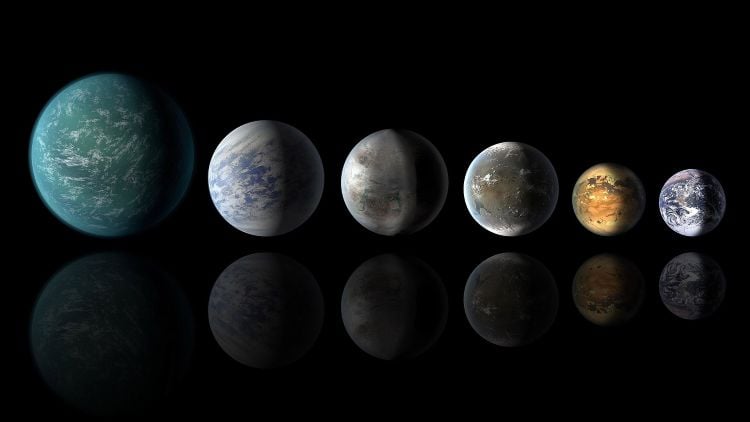How can identifying land on exoplanets help scientists better understand whether an exoplanet could harbor life? This is what a recently submitted study hopes to address as a team of researchers investigated how identifying land on exoplanets could help dispel waterworld false positives, which occur when the data indicates an exoplanet contains deep oceans (approximately 50 Earth oceans), hence the name “waterworld”. This study has the potential to help scientists develop more efficient methods for classifying exoplanets and their compositions, specifically regarding whether they contain life as we know it, or even as we don’t know it.
For the study, the researchers analyzed spectral data obtained from the United States Geological Survey (USGS) spectral library, with the exception of desert sand and ice. The goal of the study was to ascertain if the proposed next generation space telescope, Habitable Worlds Observatory (HWO), would be able to detect land masses on rocky exoplanets. In the end, the researchers determined that HWO would need a telescope size of approximately 8 meters (26 feet) to detect land masses based on signal-to-noise (SNR) data within the visible and ultraviolet wavelengths, while also building a case for HWO’s abilities for detecting oxygen biosignatures.
The study notes in its conclusions, “Detecting land via reflected light spectroscopy can help HWO rule out O2 biosignature false positives associated with the suppression of O2 sinks due to extremely deep oceans. Land detection is possible because all likely land surfaces for exo-Earth analogs have a positive sloping reflectance spectrum in the visible, whereas liquid water and water ice/snow are flat or slope negatively, respectively.”
As noted, HWO is a proposed next generation space telescope mission aimed to be the most powerful space telescope built that succeeds NASA’s James Webb Space Telescope (JWST). HWO planned capabilities include imaging objects in the optical, infrared, and ultraviolet wavelengths with its primary goal being to directly image a minimum of 25 habitable exoplanets. Despite HWO not being slated to launch until the 2040s, scientists and engineers continue to develop the technologies necessary for HWO to complete its mission and identify a habitable world beyond Earth.
Current waterworld exoplanet candidates include exoplanets (and distances from Earth) orbiting TRAPPIST-1 (40 light-years) and Kepler-11 (2,110 light-years), along with Kepler-62e (1,200 light-years), Kepler-62f (1,200 light-years), Kepler-22b (587 light-years), and GJ 1214b (40 light-years). Most recently, a 2024 study published in The Astrophysical Journal Letters announced JWST had discovered a “steam world” identified as GJ 9827d, which resides approximately 97 light-years from Earth and whose radius is slightly less than two Earths. What makes GJ 9827d intriguing is while its atmosphere is comprised of steam, the planet itself is estimated to be too hot to support life as we know it.
While the number of waterworld exoplanets are currently limited, this recent study comes as the number of confirmed exoplanets within our Milky Way Galaxy is rapidly approaching 6,000, which currently includes 219 terrestrial (rocky) exoplanets and 1,746 super-Earths like GJ 9827d. While JWST is powerful enough to analyze exoplanet atmosphere compositions, HWO could begin a new era in exoplanet discovery and exploration by directly imaging habitable worlds and potentially discovering an exoplanet capable of supporting life as we know it, or even as we don’t know it.
What new discoveries about identifying land on exoplanets will researchers make in the coming years and decades? Only time will tell, and this is why we science!
As always, keep doing science & keep looking up!
